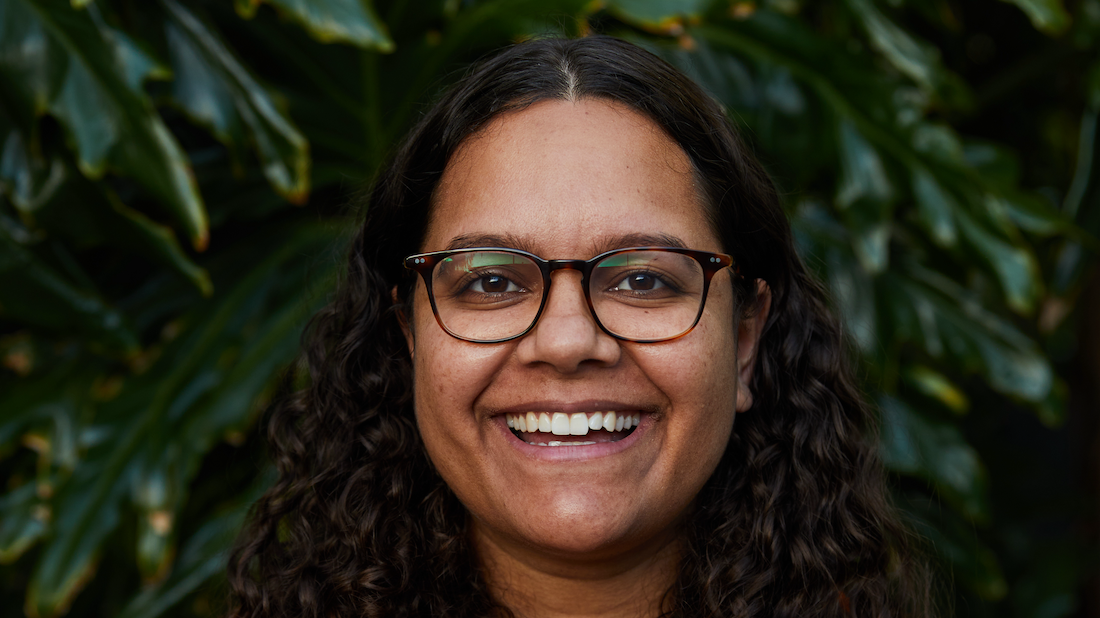
New short documentary film To Be Silent to speak volumes at Flickerfest 2024
Australian short film festival, Flickerfest, is back for 2024, taking over Luna Outdoor Cinema from Thursday, February 29 to Saturday, March 2. On opening night, the festival will honour Australia’s unique identity and culture with the Best of Australian Shorts programme. One of the highlights is set to be the short documentary film, To Be Silent, where Noongar and Spinifex Aboriginal woman Tace Stevens explores the impact of code-switching on her identity, and reckon with the power of standing firm in who she is. BRAYDEN EDWARDS caught up with Tace Stevens to find out how the short film tells a big story.
Congratulations on the release of your short documentary film, To Be Silent. How long has the idea for this film been in the works, and was it difficult to tell such a personal story?
The idea for To Be Silent started in 2020 at a mentoring session at film school. I was only supposed to send my tutor one idea but decided, at the last minute, to submit another. This second idea was To Be Silent. Although I’d been exploring identity and code-switching long before this film through poetry and photography, it was this mentoring session that sparked the idea for the film.
In 2021, most of pre-production was remote due to COVID, which allowed me to be based in Perth. In hindsight, I believe being in Perth and surrounded by my family while this story took shape was helpful, as I had that emotional support. I would also talk through ideas with them constantly. If I had been based in Sydney away from family during this process, it would have been harder.
What fuelled you to make To Be Silent?
From day one, I’ve always wanted to use this film as an education resource in schools and beyond. My first memory of encountering racism was a racist joke at my friend’s dinner table. I was around 10 years old. If I were old enough to encounter racism, then other children would be old enough to learn about it. It’s important to be educated and keep talking about racism and code-switching because we all have a responsibility to speak up about it.
As a Noongar and Spinifex woman, what inspires your storytelling, and how does it reflect the diversity of the communities you have lived in?
My family, culture and history inspire the type of stories I want to tell, along with the roles and responsibilities I have as a daughter, sister, and aunty.
You started your career in community development and education, and you then went on to become a celebrated documentary photographer. What motivated your career shift to filmmaking?
After several years assisting on photography shoots and short documentaries, I wanted to get some formal training. I didn’t want to depend on other people’s skills and resources to tell stories. I wanted to be equipped to tell stories that were important to me.
Stories were always at the core of what I loved to do, so I decided to go to film school. While at film school, I thought I had to choose either film or photography. Since graduating, I’ve realised I don’t have to. They complement each other.
What do you hope your audiences take away from your filmmaking, and what films do you hope to make in the future?
I hope that my films make people curious, encourage them to have conversations, and motivate them to learn more. Making To Be Silent was a healing experience for me. I want to be able to help others have that same experience. Now that I’ve finished my studies, I have the skills and resources to help our mob and community tell their stories with autonomy.
Of course, your film To Be Silent wouldn’t have been possible without a team to make it happen. Who else was part of this project that helped bring this film to life?
I had a strong team that supported me and this project from beginning to end. They include Skye Leon (Producer), Jasmine Stokes (Editor), Raquel Cuevas (Sound) and Maddie Green (Cinematographer). I also received invaluable support from AFTRS staff, in particular Rich Welch, Head of Documentary for the MA, and Kym-Louise Barton, Sales and Distribution Manager.
And what did you find to be the most rewarding part of creating the film?
It was a healing experience for me. But the thing that has been the most rewarding are the conversations I’ve had with strangers who approach me after a screening, sharing their own story of code-switching. It’s been an incredibly humbling and rich experience for my film to be the catalyst for these conversations.
You are the key speaker at a free AFTRSx Flickerlab workshop focusing on the behind-the-scenes of your film just prior to its Flickerfest screening. What do you hope participants will gain from this experience?
I hope that this workshop gives participants the confidence to tell personal stories. Whether it’s a family story or their own personal experience, personal stories are rich and have the power to connect people from different backgrounds and experiences.
What is next for you? Do you have any more projects in the works that we can keep an eye out for?
I have a photography project exhibiting at the Centre for Contemporary Photography in Naarm from March 2 to May 12, 2024. This project, We Were Just Little Boys, shares stories from the survivors of the Kinchela Boys Home, a NSW state-run institution that kidnapped hundreds of Indigenous boys between 1924 and 1970.
In April, production starts for my short documentary, Anangu Way. This will follow my older brother as he travels to Tjuntjuntjara to spend a week with our father and create a woomera while reconnecting with Country, family and culture. This project was funded through the Screen Australia and Network 10 initiative, First Facts, and is being produced by Brooke Collard from Goguljar Yok.
